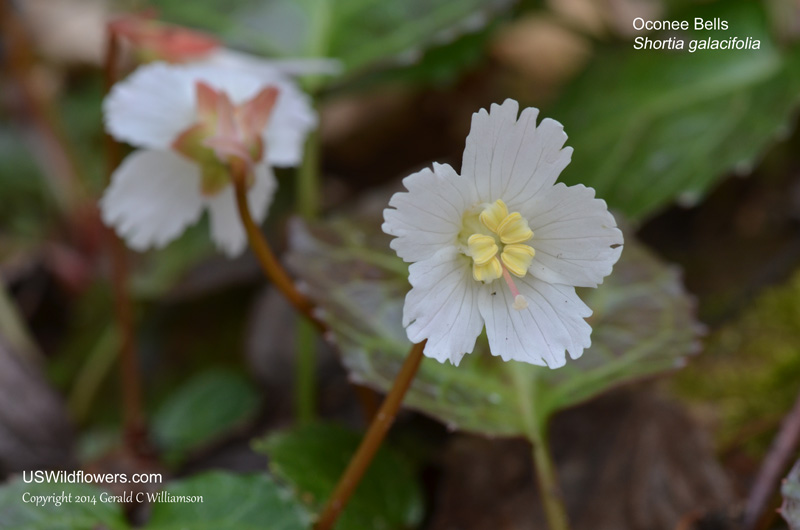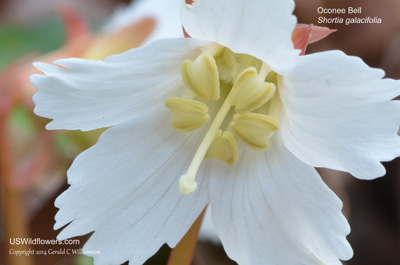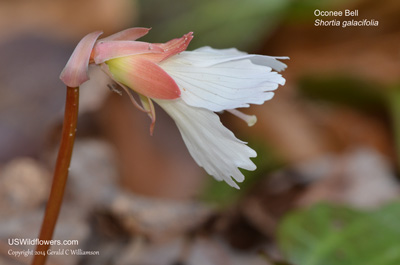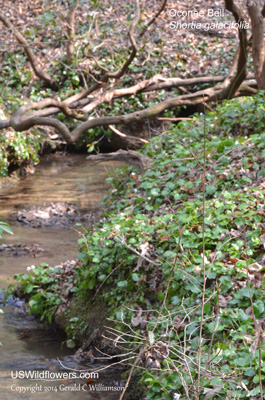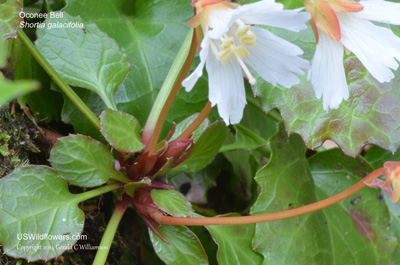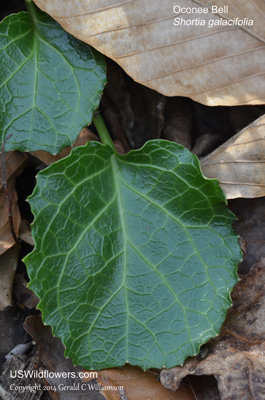Wildflowers of the United States | |||||||||||||
| |||||||||||||
Shortia galacifolia - Oconee Bells, Acony Bell, Southern Oconee-bells, Northern Oconee-bells, Shortia. There are five or six species in the Shortia genus, but just this one in North America, according to Flora of North America. The other species are native to Asia, and apparently have not naturalized in North America. Shortia galacifolia is a rare plant, protected as Endangered in both Georgia and North Carolina, and listed as a federal species of concern. There are two varieties - var. brevistyla (which, as implied by the variety name, has shorter styles, as well as shorter corolla lobes) is found only in McDowell County, NC (Northern Oconee-bells.) Var. galacifolia (Southern Oconee-bells) is found in 1 county in Georgia, 2 or 3 counties in South Carolina, and a few counties in North Carolina. There are reports of naturalized populations in Tennessee and Virginia. There is also a very recent discovery of the plant in DeKalb County, Alabama, which has not yet (as of late 2012) been determined as native or naturalized. It grows along streambanks and other moist slopes in areas with high rainfall, usually under the shade of Rhododendron.
| The story of the discovery and rediscovery of this rare plant is interesting - its foliage was initially found by botanist Andre Michaux in 1788, and those specimens were discovered in Michaux's native France by American botanist Asa Gray in 1839. Gray, working on The Flora of North America, determined to find this plant, which he named after American botanist Charles Short. Due to a different interpretation of Michaux's labelling the specimen as from the "high mountains of Carolina" in 1843 Gray spent several months searching in areas above 5,000' elevation, well above where it is found. Several other botanists joined the search in subsequent years. Finally, in 1877, 17 year old George Hyams found the plant, which he didn't recognize, along the Catawba River in North Carolina. His father was an amateur botanist, and sent a specimen to a friend, who in turn informed Asa Gray of the discovery. In 1879 an expedition led by Gray to personally see the plant. In 1888 botanist Charles Sargent found the plant in the area where Michaux first found it, in an area that was inundated in 1973 by the waters of Lake Jocassee, which was built by Duke Power. Found in: AL, GA, NC, SC, TN, VA Leave comments on Shortia galacifolia at this link.  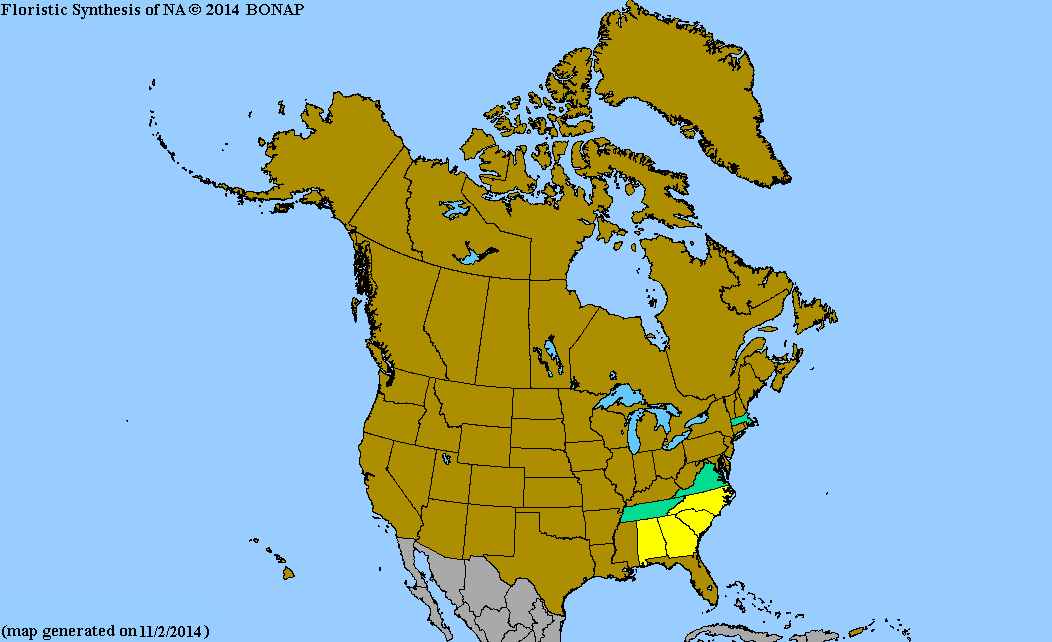 Map courtesy of The Biota of North America Program. Map color key Search Our Database: Enter any portion of the Scientific, Common Name, or both. Do a general Google search of the entire site: #ad #ad
| #ad
| | ||||||||||
|
Commercial / Cookie Notice Looking for Wildflowers for a specific state? Check here: | |||||||||||||
|
All content except USDA Plants Database map Copyright Gerald C. Williamson 2024 | |||||||||||||
Code Update 20230302

